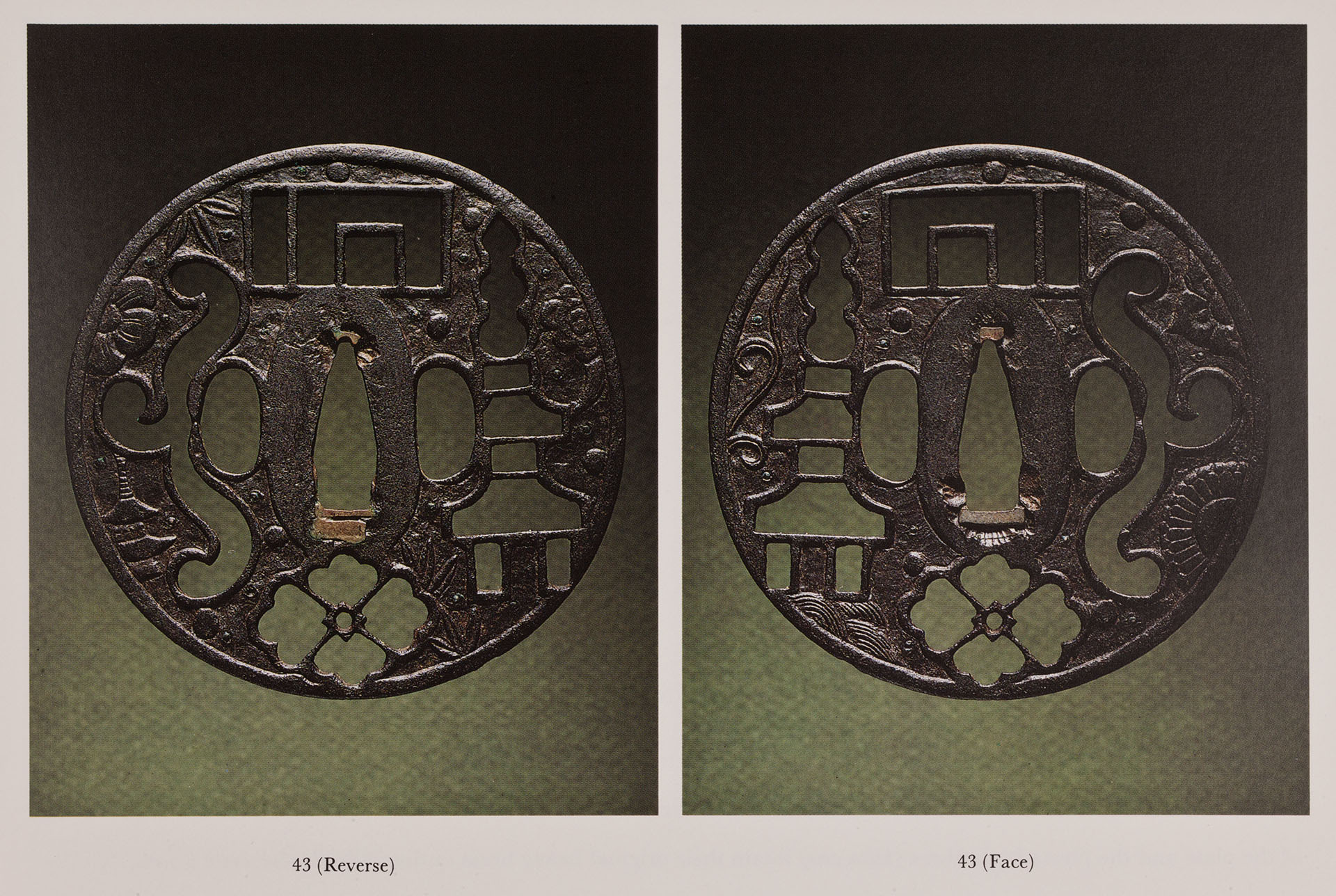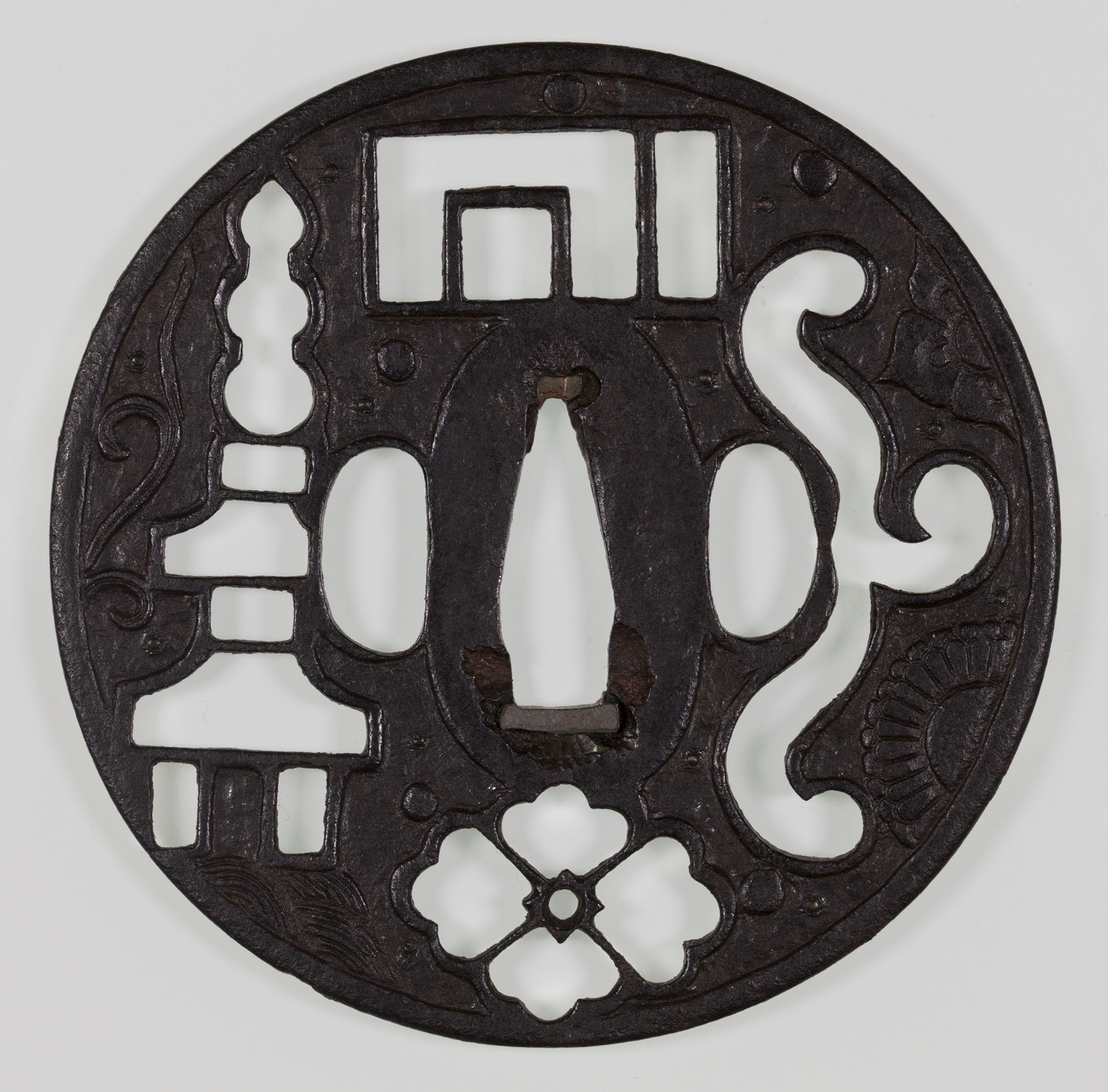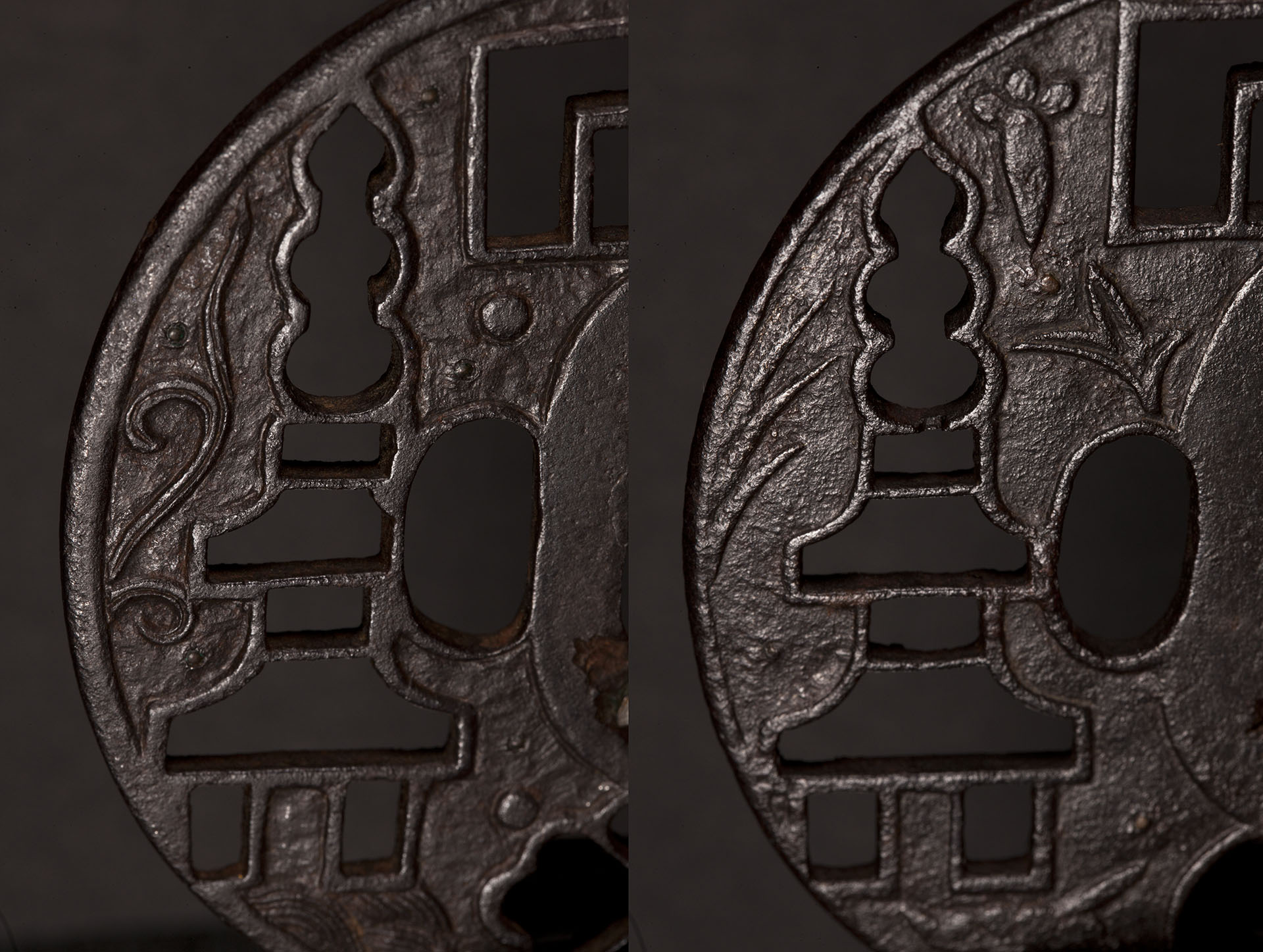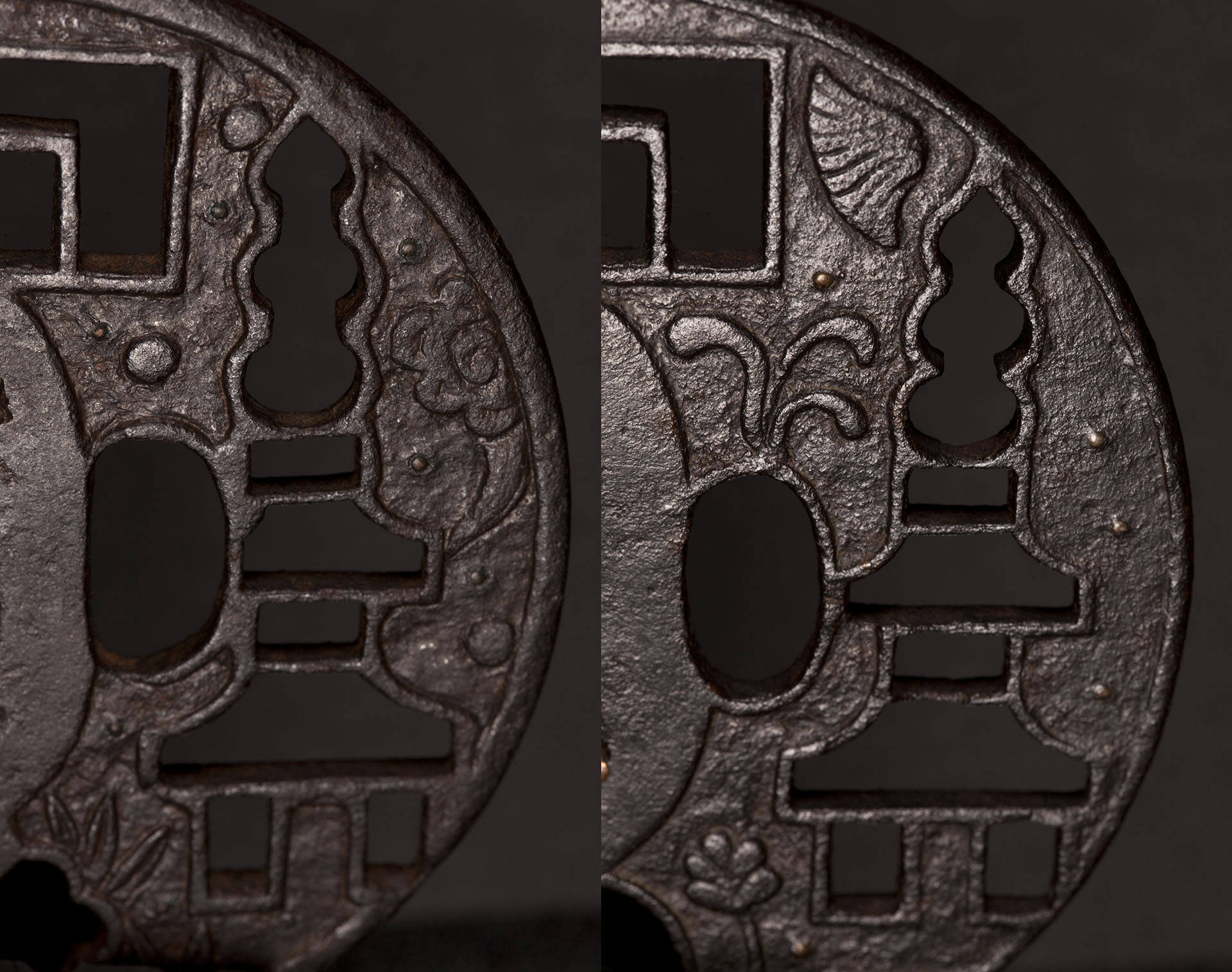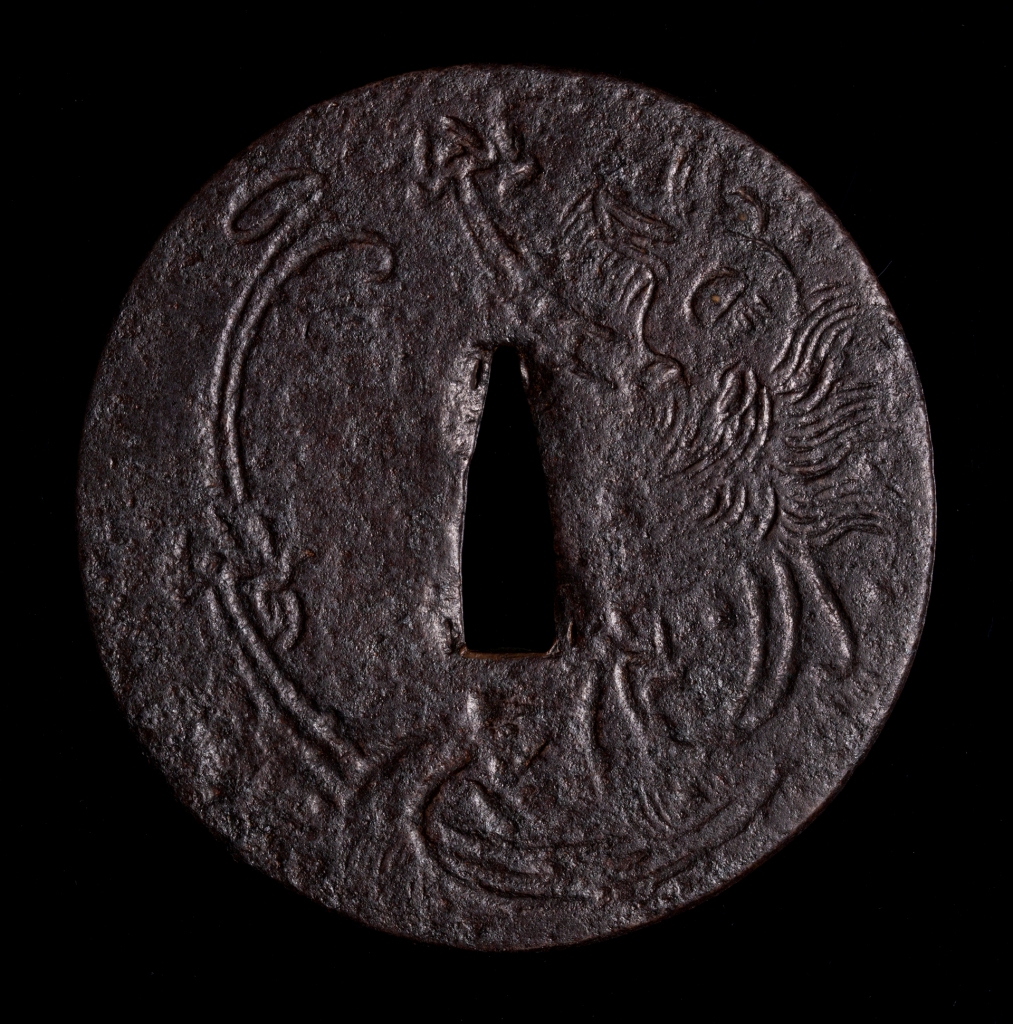
A large iron guard with a carving of a rather abstracted dragon’s body topped by a strange head with a mane and a single dot of brass for the eye’s pupil. The design on the back is the same. Similar guards in the literature are split between attributions to Kamakura-bori and Katchushi. They seem to me to have more to do with the Kamakura style, although there is an example with a Saotome signature that I will introduce later on.
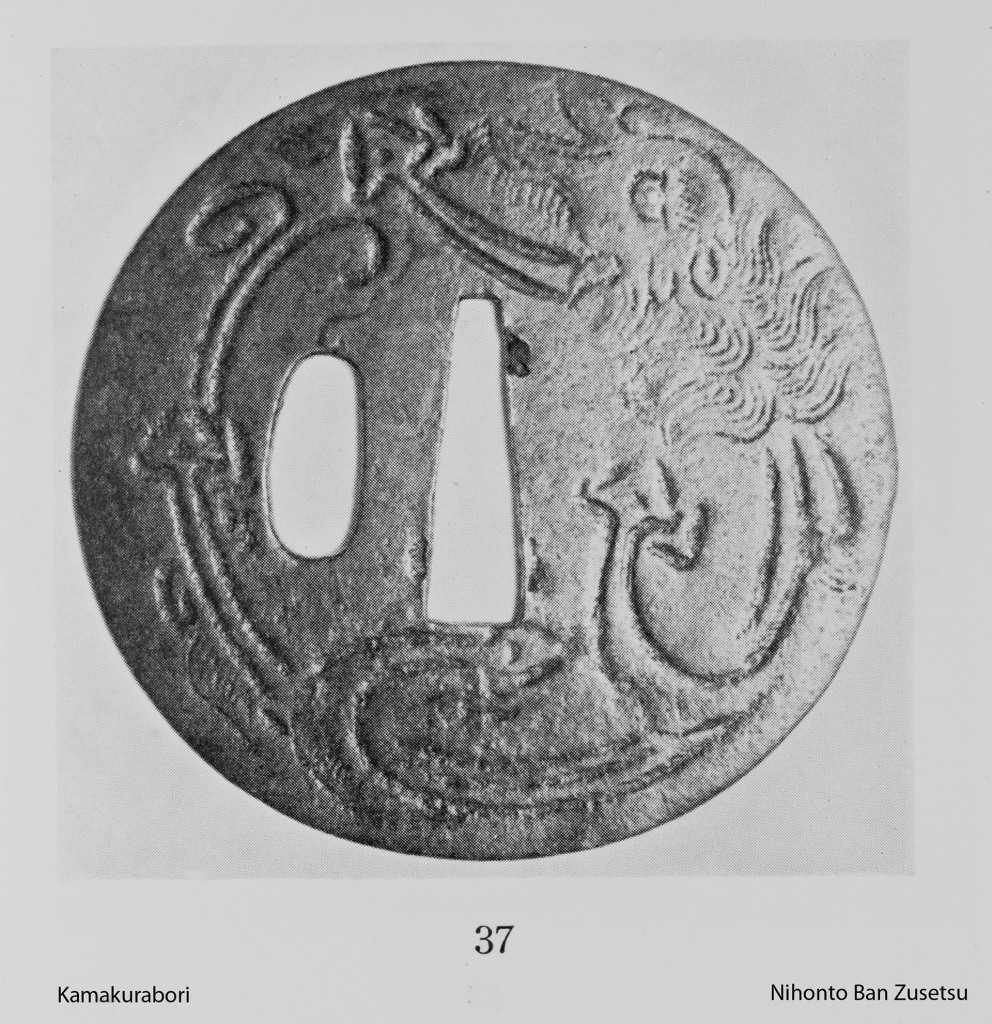
A nearly identical example to the first with the addition of a kozuka ana. The shape of the ana looks early whether original or not. Note that in both examples parts of the dragon at the top and bottom of the nakago ana would be covered by the seppa.
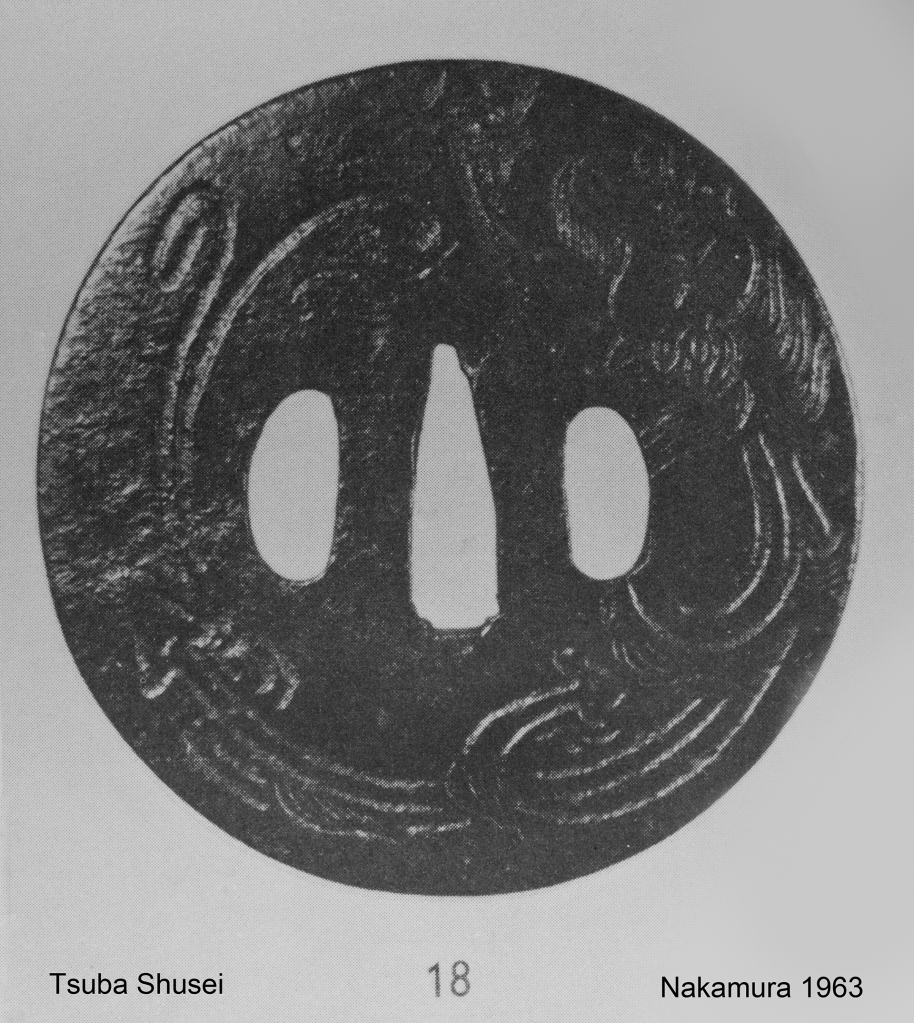
Again, very similar. This time the kogai ana interrupts the design but the seppa dai does not. The bodies of all of these do look like the more abstract style of dragon horimono seen on swords, but the heads are unusual.
The most “primitive” style attributed to Kamakura-bori are those guards carved with concentric rings and sometimes waribite. It seems like the type of carving here could be a pictorial elaboration of that style, but both are still quite different from the carving approach and motifs seen in typical Kamakura style tsuba. It’s hard to say if these predate the classic pieces, are a sideline style or something unrelated. I have seen both this dragon style of guard and the ring types attributed to Kamakura in recent NBTHK hozon kanteisho.

It’s a bit hard to see what’s going on in the original photo, but it appears to be a variation on the theme. Two shinchu ten zogan eyes are visible here. The iron plates seem similar in these pieces and is probably within the range of what was used in more conventional Kamakura work. Relatively few of the latter have refined and smoothly finished surfaces. More are a bit more rustic and similar to these dragon guards. Many are rough and dull.
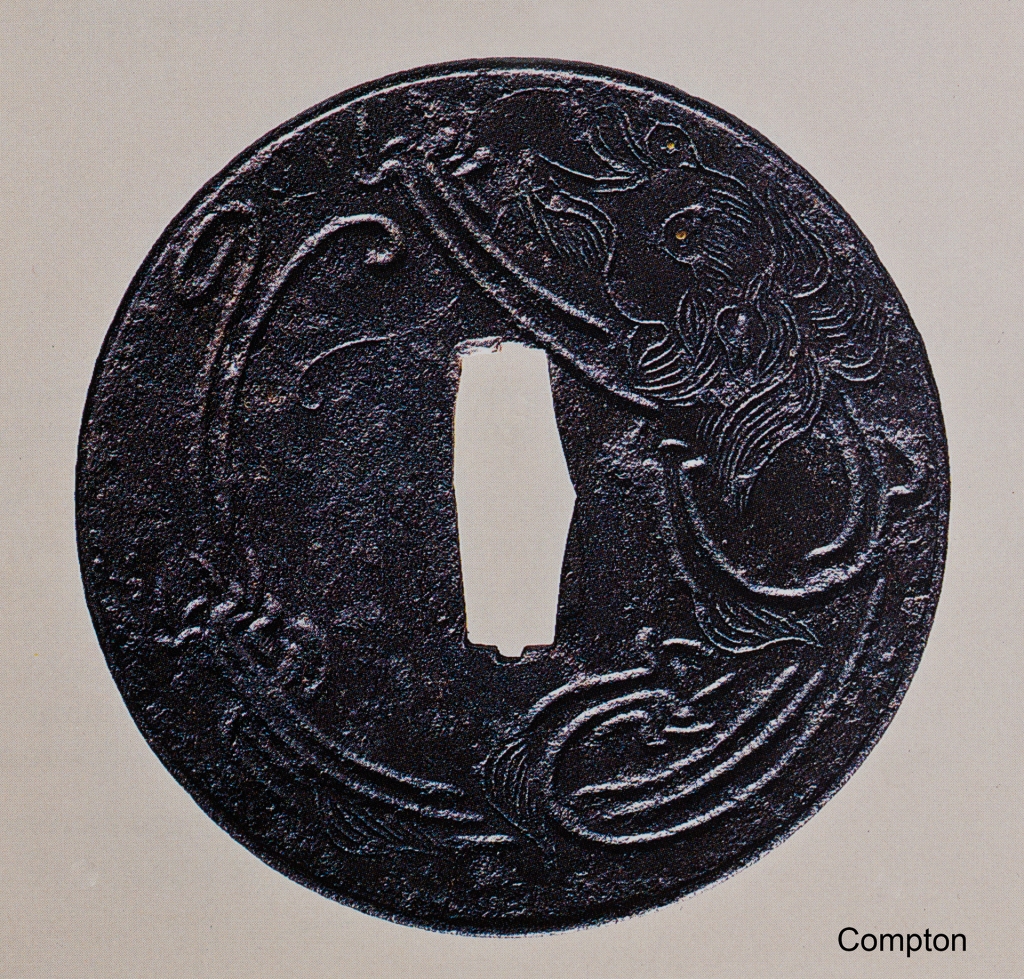
Lot 2 from the first Walter Compton sale at Christies, attributed to “Kamakura style” where other more conventional examples in the same sale were called Kamakura-bori. The raised rim appears original and is a katchushi-like feature. The nakago ana appears to have been flipped at least once. It was published the other way around in the catalog.
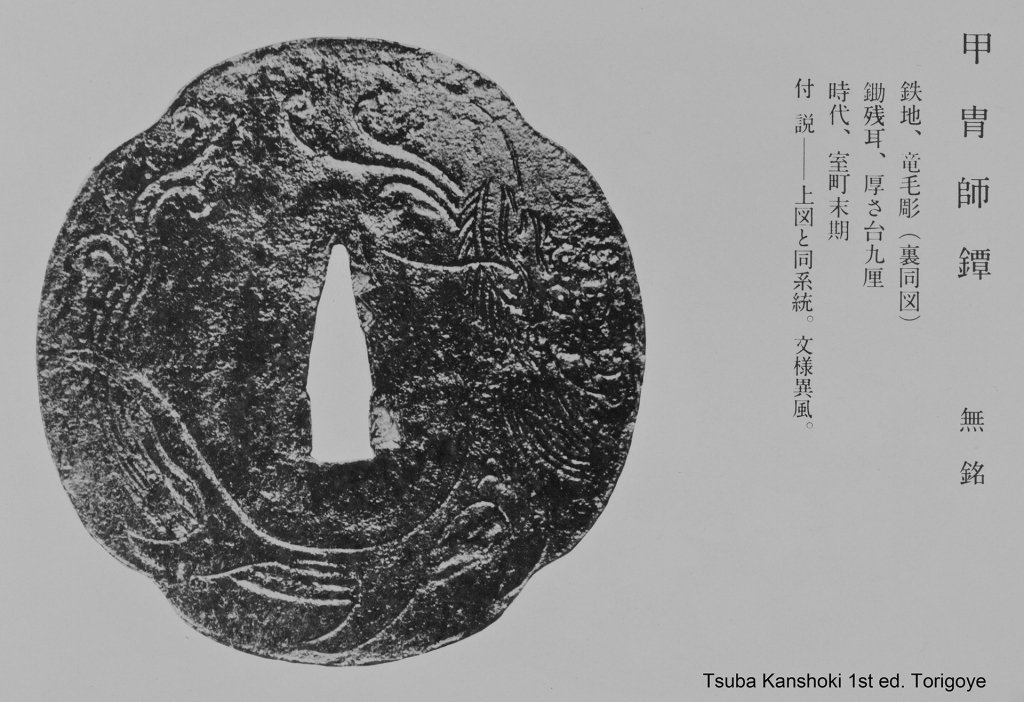
Another variation with a more dragon like head and two eyes. Hard to say if the mokko shape is original. It looks like it impinges on the carving in some spots, so perhaps a later modification. The rim looks slightly raised. The flame-like carving near the bottom is a new addition.
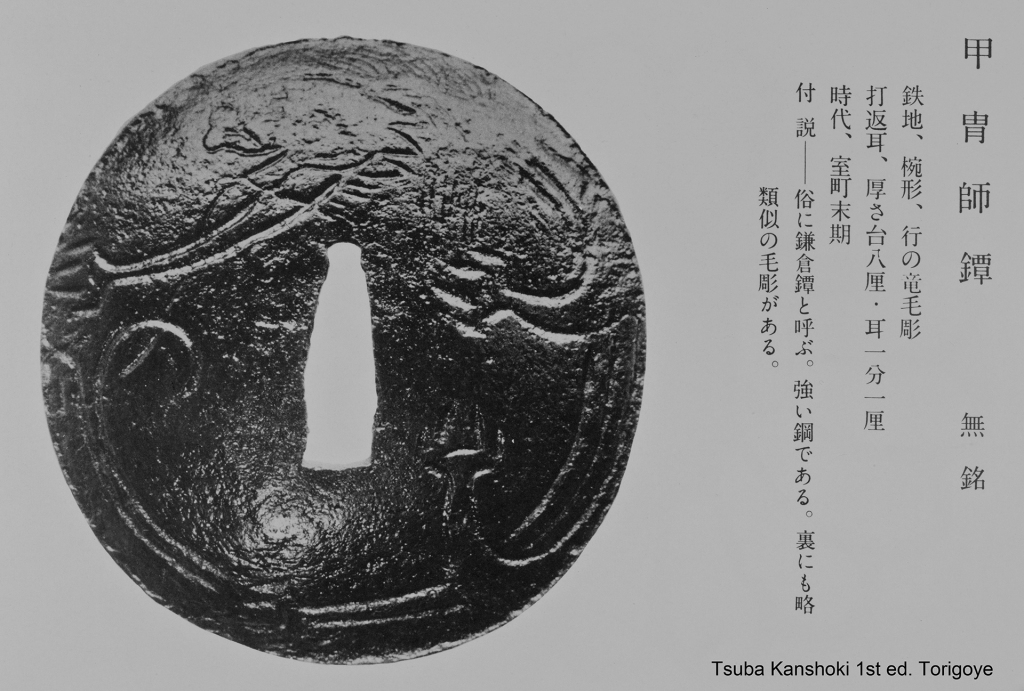
The head here looks more like a bird, or at least something with a beak. The rest of the workmanship appears consistent with the examples labeled Kamakura elsewhere.
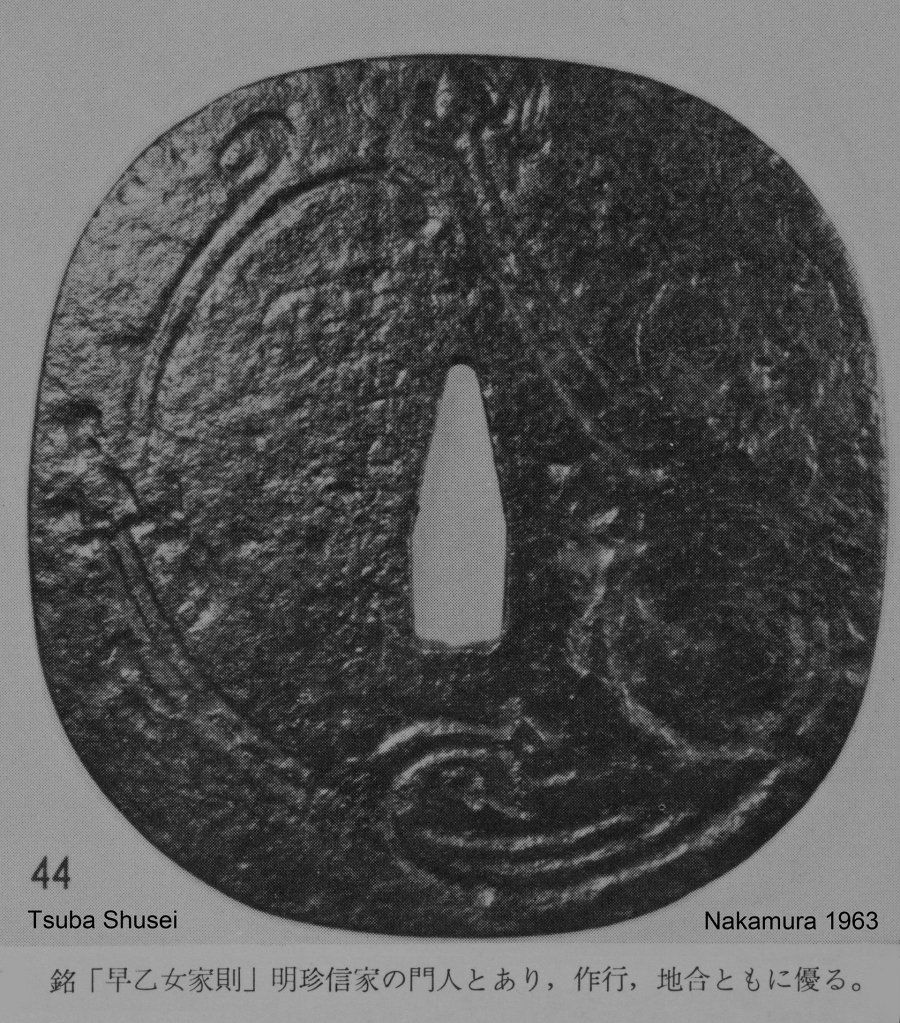
It’s difficult to make out in the original photo, but it appears to be similar to the ones we started with. The signature is even harder to see, but it would interesting to know if it is original to the piece. We do see the occasional older guard with added Saotome or Myochin signature in addition to the legitimate examples. Haynes lists a Saotome Ienori at H 01798 working ca. 1800. That would seem at odds with the apparent age of these tsuba, so it would be interesting to see this one in person. Most authors date these to late Muromachi to Momoyama, although as usual there is little to back this up.
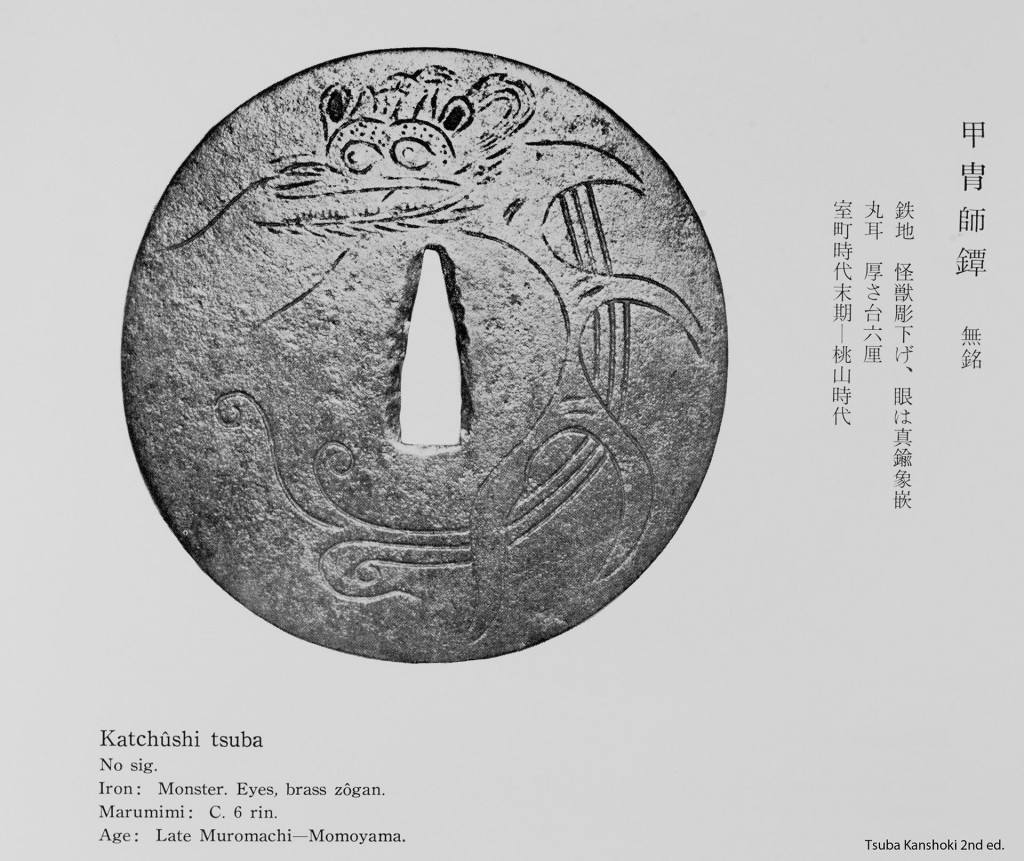
Another even more unusual variation. This is pretty far from work in the mainstream Kamakurabori style. The “flame like” features reappear.
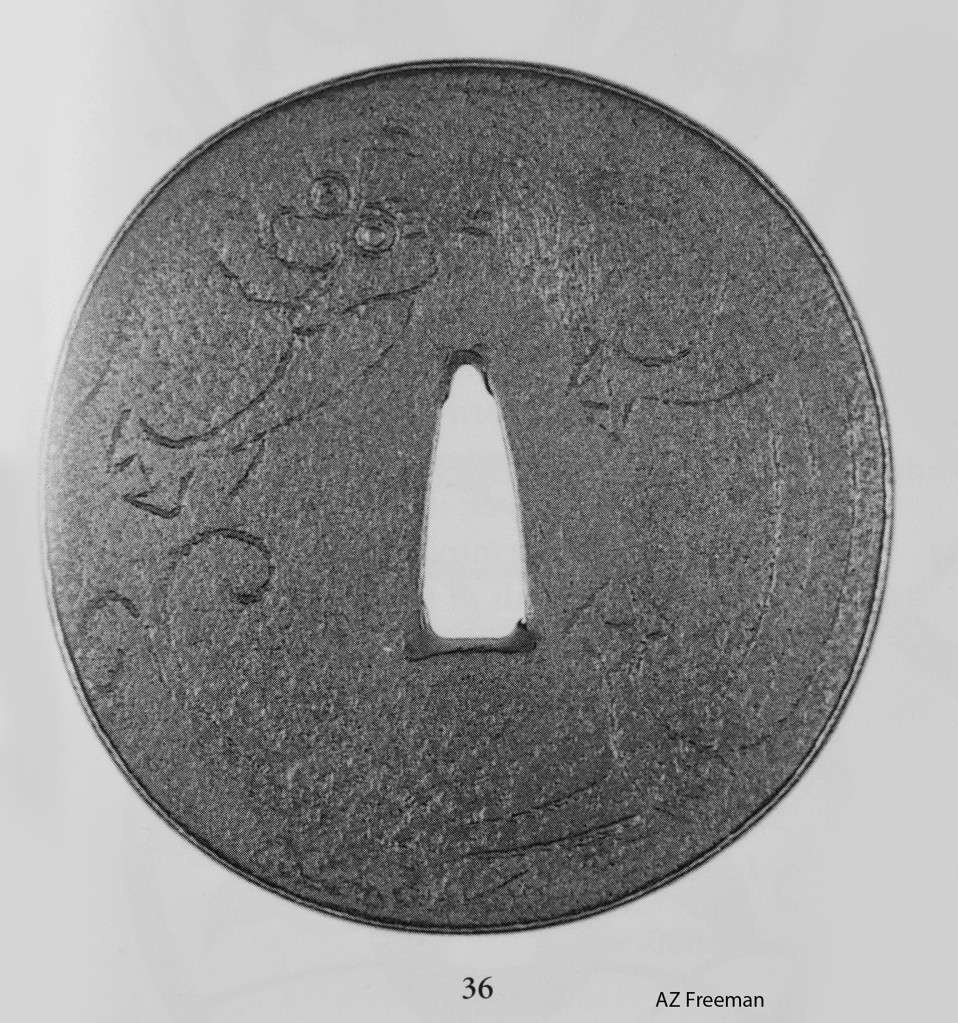
And maybe a much later copy of the same idea. The plate and carving are quite different and not particularly attractive.
So, are these proto-Kamakura tsuba? They have more in common with that style than they do with work typically assigned to the katchushi category. Even if there is no relationship with the main body of Kamakura-bori work, the term “proto-Kamakura” is a useful enough tag in discussion of these carved early tsuba.
Update: Reader David Stiles provided photos of an interesting tsuba with attribution to Higo by the NBTHK. The motif is described as rain dragon, written with the more complex character for dragon.

We know from Tom Helm’s article referenced in the previous post that the Higo swordsmith Enju Kunihide made a guard in the “proto Kamakura” style with ring and waribite/drawer pull carving.
http://toryu-mon.com/Toryu-Mon/Archives/Entries/2010/10/31_Enju_Kunihide.html
In this case the rim is quite different than the other examples above and does have something of a Jingo look to it. Overall it also appears to be a bit later. I wonder if as with Tom’s example there might one of these with a Higo signature.
I don’t have photographs of the reverse sides of the guards from the literature, but the first guard shown has the dragon in the same orientation on both sides as this one does.



